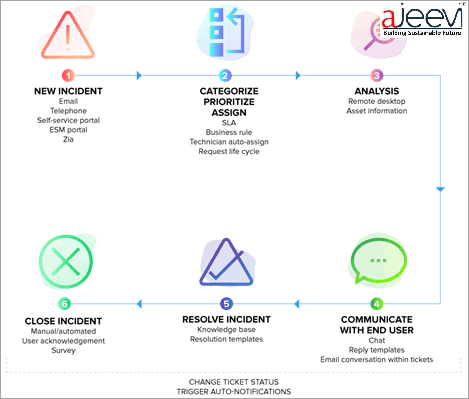Industries-> Smart Incident Management



In the realm of incident management, the integration of the Internet of Things (IoT) is reshaping traditional approaches and ushering in a new era of smart and responsive systems. A Smart Incident Management System empowered by IoT leverages interconnected devices and real-time data analytics to enhance the overall efficiency, coordination, and effectiveness of incident response strategies. From natural disasters and accidents to security breaches, the deployment of IoT devices facilitates swift detection, immediate response, and streamlined collaboration among emergency responders.
IoT-enabled sensors, surveillance cameras, and wearables contribute to a comprehensive network that continuously monitors and gathers critical data during incidents. This wealth of real-time information not only provides early detection and situational awareness but also enables more informed decision-making by responders.


Android Handheld UHF Reader
Automatic Boom Barrier
Automatic Number Plate Reader Camera
Bin Level Sensor
Bio Metrics Machine
Bullet Camera Live
Chlorine Sensor
Data Transmission Unit
Emergency Call Box
Environment Sensor
Face Recognition
Flood Sensor
Fuel Sensor
Galvanized Iron Pole
Gi-Pole
GPS
GPS-AIS140
Handheld HF Reader
Handheld UHF Reader
PTZ Camera
Public Address Speaker
Public Address System
Hydraulic Boom Barrier
IP Bullet Camera
IRIS
Magnetic Sensor
Network Rack
Network Video Recorder
Panic Button
Parking Entry Exit UHF Reader Vehicle Mounted UHF Reader
Passenger information systems
Ph Sensor
Refrigerator Sensor
RFID Tag – HF
RFID Tag – UHF
RFID Tag Metal – UHF
Smart Kiosk
Smart Pole
Soil Sensor
Drainage Sensor
Temperature Sensor
Turbidity Sensor
Ultrasonic Flow Meter Variable Sign Board Weigh Bridge Entry Exit Reader
Ajeevi Offer “Enterprise IoT Solutions” with in-house R&D, Capability of manufacturing IOT devices.
505, Tower A-1, Corporate Park
Noida 201301, Uttar Pradesh India
presales@ajeevi.com
+91-9654323500